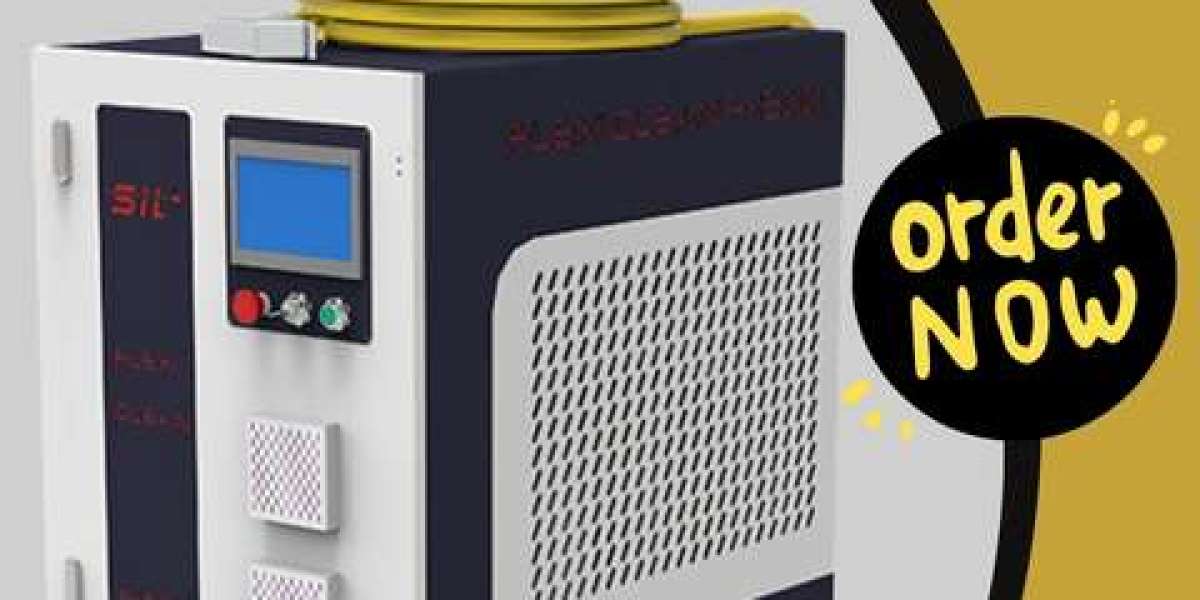Let’s break it down in detail.
The Industrial Need Behind the Laser Rust Cleaner
Before jumping into how a laser rust cleaner works, consider this: industries invest billions annually in corrosion control. Metal rust affects structural integrity, shortens equipment life, and creates major safety risks. Traditional cleaning methods like abrasive blasting, acid dipping, or grinding all come with a long list of issues: surface damage, hazardous waste, downtime, and heavy labor.
In contrast, a laser rust cleaner works by directing high-energy laser pulses onto the rusted surface. These pulses rapidly heat and vaporize the rust layer without damaging the metal underneath. This is not science fiction; it’s real-world application, now operational in factories, workshops, shipyards, and maintenance facilities across the globe.
Who Uses Laser Rust Cleaners—and Why?
1. Aerospace Maintenance Teams
Aircraft components, especially those made of aluminum and titanium, must be free of corrosion before inspection or repainting. Traditional abrasive cleaning damages the surface or alters its aerodynamic shape. Enter laser rust cleaner: it removes rust while preserving the part’s profile and structure. Some airline maintenance crews now rely on mobile laser cleaning units for hangar operations.
2. Automotive Restoration Experts
Classic car restorers face a big challenge—removing years of rust from vintage parts without damaging delicate engravings, welds, or casting details. A laser rust cleaner lets them target just the oxidized areas, maintaining the originality of every panel and bolt.
3. Oil & Gas Industry
Refineries, pipelines, and rigs often deal with heavy corrosion in harsh environments. Using a laser rust cleaner here means less disassembly, zero chemicals, and no cleanup of abrasive grit. Workers clean the surface in-situ, saving hours in labor and avoiding environmental risks.
4. Military & Defense
Defense equipment—vehicles, ship hulls, missile components—are prone to rust, especially in storage or extreme climates. In many military facilities, mobile laser rust cleaning systems are already in use to prepare equipment without stripping paint unnecessarily or requiring chemical solvents.
5. Industrial Manufacturing
In many production lines, especially those dealing with steel and alloy parts, rust during storage or transit causes delays and defects. A laser rust cleaner integrates into the manufacturing line, cleaning parts instantly before assembly or coating—no human handling, no bottlenecks.
How the Process Works in Practice
When a technician operates a laser rust cleaner, they’re not just pointing a light at metal. The system is calibrated based on the material, type of corrosion, and required depth. A focused beam moves across the surface, controlled by hand or automated arms, removing oxide, paint, or residue.
This process is non-contact. That’s crucial. There’s no brushing, no scraping, no physical abrasion—only thermal shock. The rust, being less dense and more reactive to light, absorbs the laser energy and vaporizes instantly. The bare metal, with different reflective properties, remains largely unaffected.
Moreover, real-time monitoring systems in advanced laser rust cleaners ensure precision. Sensors detect when the rust layer is gone and stop the laser, avoiding any unnecessary exposure to the base metal.
Maintenance and Upkeep
A laser rust cleaner doesn’t operate in isolation. Regular maintenance is essential. Lenses need periodic cleaning. Filters must be changed to prevent buildup of vaporized particles. Cooling systems require inspections to keep the laser running at optimal temperatures.
Despite the sophistication, daily operation is straightforward. The cleaning head is ergonomic, software interfaces are user-friendly, and systems often come with presets for different metals and rust levels. This makes it possible for technicians to become skilled operators in just a few days.
Real-Life Case Study: Shipyard Maintenance Overhaul
One European shipyard replaced their abrasive blasting system with a high-powered laser rust cleaner setup. Previously, every cleaning operation required:
Full PPE suits
Shutdown of surrounding areas
Environmental containment for dust and debris
Chemical neutralization for some treatments
After the switch:
Cleaning time was reduced by 40%
Maintenance costs dropped by 35% over 18 months
Zero chemical waste was reported
Equipment downtime decreased significantly
Technicians now work in open spaces without respirators or full-body protection, and the laser system is mounted on a mobile cart with articulated arms that reach difficult angles in engine rooms and ballast tanks.
Compliance and Regulations
Laser rust cleaning aligns with increasing government regulations on environmental safety and worker exposure. There are no VOC emissions, no contaminated wastewater, and minimal noise. That’s why industries are adopting it not just for performance, but for regulatory peace of mind.
Countries across Europe, the U.S., and Asia are tightening laws around chemical use in industrial cleaning. Investing in a laser rust cleaner now future-proofs businesses from potential legal or compliance costs down the line.
The Psychology Behind the Purchase Decision
Let’s face it: purchasing a laser rust cleaner is not a minor expense. But companies that understand total cost of ownership (TCO) recognize its value.
It’s not about comparing it to a wire brush or sandblaster on day one. It’s about what it saves in 6 months:
Reduced labor costs
No rework due to surface damage
Cleaner, safer environments
Less training time
Higher quality finish
Decision-makers in engineering, production, and operations aren’t just buying a tool. They’re buying uptime, precision, and modern compliance.
Final Thoughts
The laser rust cleaner is not just a new player in industrial cleaning—it’s fast becoming the gold standard. Whether you're dealing with machinery restoration, manufacturing parts, or maintaining valuable infrastructure, its ability to remove corrosion with surgical precision is unmatched.
Companies serious about quality, safety, and long-term efficiency are quietly adopting this technology. And while it's still under the radar in some markets, those who’ve implemented it rarely go back to older methods.







